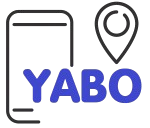Beauty Training Business

Type: Consulting (Training and Workshops)
Key Products for Sale:
- Beauty training workshops (makeup, skincare, haircare)
- Certification courses in beauty and cosmetology
- One-on-one beauty coaching sessions
- Online beauty courses and tutorials
- Training kits and beauty products.
Technology Considerations:
- Use of social media platforms for marketing (Facebook, Instagram, YouTube)
- Online learning management systems (LMS) for course delivery
- Mobile phone for communication and customer interaction
- Video conferencing tools for virtual workshops (Zoom, Google Meet)
- Website for online presence and course registration.
Market for the Products:
- Young adults and teenagers interested in beauty and cosmetology
- Aspiring makeup artists, hairstylists, and beauty consultants
- Individuals looking to improve their personal grooming skills
- Salons and spas seeking to upskill their staff
- Beauty enthusiasts seeking professional training.
Key Inputs into the Business:
- Materials: Makeup products, skincare items, haircare products, training manuals
- Labour: Professional beauty trainers, administrative assistant, marketing personnel
- Equipment: Makeup kits, training tools, audiovisual equipment, laptops, projectors.
Product Preparation Process:
- Develop a comprehensive training curriculum and materials.
- Source high-quality beauty products and tools for practical sessions.
- Set up a conducive training environment with necessary equipment.
- Promote the workshops through social media and partnerships with local beauty businesses.
- Conduct training sessions, ensuring hands-on experience and personalized feedback.
Quality Considerations:
- Employ experienced and certified beauty trainers.
- Use high-quality, reputable beauty products and tools.
- Regularly update training materials to reflect the latest beauty trends and techniques.
- Gather and act on participant feedback to improve the training experience continually.
Cost of Investment:
- Initial stock of beauty products and tools: 20,000 KES
- Marketing and branding: 10,000 KES
- Training materials and manuals: 5,000 KES
- Basic audiovisual equipment: 10,000 KES
- Rent for training space (if applicable): 10,000 KES per month
Total estimated cost of investment: 500000,000 KES
Required Operational Infrastructure:
- Training space (can be a rented room or home-based setup)
- Training equipment (mirrors, chairs, tables)
- Audiovisual tools (projector, screen, speakers)
- Office setup for administrative tasks (desk, computer, printer)
- Storage for training materials and products.
Most Suitable or Viable Location of the Business:
- Urban areas with high population density
- Near colleges, universities, and beauty schools
- Central business districts and commercial centers
- Residential neighborhoods with easy access for participants
Potential Sources of Investment Capital:
- Personal savings
- Loans from family or friends
- Microfinance institutions
- Youth entrepreneurship grants and programs
Requirements for Effective Management:
- Strong organizational and planning skills
- Excellent communication and customer service abilities
- Basic accounting and financial management knowledge
- Marketing and social media skills to attract and retain participants.
Role of Mobile Phone and ICT in the Business:
- Use mobile phones for scheduling and communication with participants.
- Social media platforms for marketing, showcasing workshops, and engaging with the audience.
- Video conferencing tools for conducting virtual workshops.
- Online payment solutions like M-Pesa for convenient transactions.
Statutory Regulations and Licenses:
- Business registration with local authorities
- Trade license from the county government
- Health and safety compliance for the training space
- Certification as a beauty trainer (if required)
Pricing:
- One-day workshop: 2,000 KES per participant
- Weekend training course: 5,000 KES per participant
- Full certification course: 15,000 KES per participant
- One-on-one coaching session: 1,500 KES per hour
- Online courses: 1,000 KES to 3,000 KES per course.
Profitability:
Profitability will depend on the number of participants and the frequency of workshops. With effective marketing and high-quality training, the business can achieve profitability within the first six months to a year.
Next Steps to Take:
- Develop a detailed curriculum and training materials.
- Source high-quality beauty products and tools.
- Set up a training space with the necessary equipment.
- Create social media profiles and start marketing the workshops.
- Develop a professional website with course information and registration.
- Network with local beauty businesses and schools for partnerships.
- Launch the first workshop with promotional offers to attract initial participants.
- Collect feedback and refine the training programs to ensure ongoing improvement and participant satisfaction.

